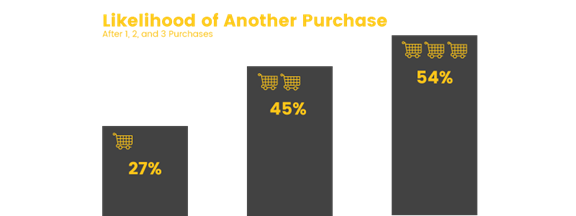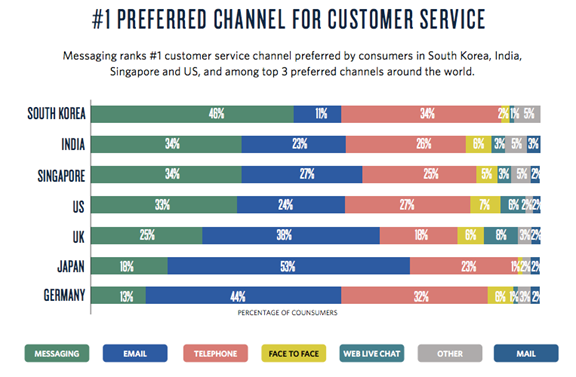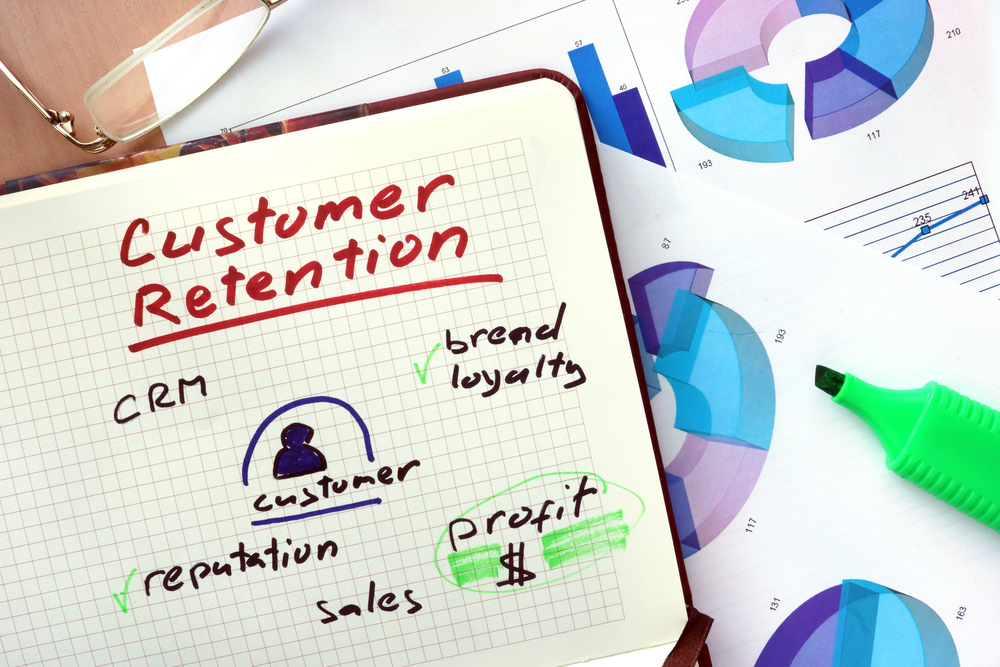 Attracting new customers into a business is expensive. Most people who visit a website will never buy anything. They will never come back and they will never tell anyone about the products or services they saw on the site. In fact, according to Smart Insights (2018), the average conversion rate of the second quarter in 2018 was 2.63 percent. So for most commercial websites, between two and three people for every 100 visitors actually buy something.
Attracting new customers into a business is expensive. Most people who visit a website will never buy anything. They will never come back and they will never tell anyone about the products or services they saw on the site. In fact, according to Smart Insights (2018), the average conversion rate of the second quarter in 2018 was 2.63 percent. So for most commercial websites, between two and three people for every 100 visitors actually buy something.
Despite this, it’s important to continually go after new customers in an attempt to bring them into the website and potentially convert them into sales. However, all of this points to the importance of taking a current customer and turning them into a returning customer. For any business to succeed, it needs to focus not only on seeking out new leads but more importantly, on current customers and keeping them coming back.
The Value of the Repeat Customer
For most businesses, the vast majority of profits is made up of a small percentage of customers. In fact, according to Smile.io (2018), eight percent of customers will make up 40 percent of a company’s revenue. This eight percent of customers are repeat customers who continually return back to the store for more purchases.
According to the same research, after a single purchase, a customer becomes 27 percent more likely to return for a second purchase. This means a little more than one of every four customers will return for a second purchase, which offers a substantially higher conversion rate than the two to three visitors for every 100. After the second purchase, there’s a 45 percent chance the customer will return for a third purchase, and after that third purchase, they are 54 percent likely to return for another.

(Source)
With every subsequent purchase, a customer becomes even more likely to return, which is why profits are not in going after new customers. It is going after current customers.
Display Customer Appreciation
Customers leave a business for a number of reasons. They might leave the market altogether, they might find a similar service through a friend or relative, or a competitor might persuade them to jump ship and purchase products and services from them. While all of these are viable, the top reason why customers leave a business is that they don’t believe the company cares about them.
According to Super Office (2018), 68 percent of customers end up leaving a business because they said the business doesn’t care about them. This is more than all other reasons combined. So while there will always be some customers who leave for other varying reasons, the ability to show just how much a customer means to a business is one area the business can control. It just needs to identify ways to show its continued appreciation.
(Source)
There are a number of ways a business can demonstrate a customer’s importance. Each business needs to determine which methods work best for it and its client base, as different demographics and industries, may look for varying attributes for demonstrating importance. However, according to the same Super Office report, several of the best ways to do this is by sending target customers with special offers made specifically for them, to create a VIP reward program that provides customers with bonus gifts and discounts for repeat purchases, to provide personalized follow-ups after a purchase and to schedule time with the most important customers. Offering face to face communication, while not often possible for all customers, is one of the best ways to demonstrate a client’s importance.
Personalized Data Offering Improved Return On Investment
To focus on customers and to boost customer retention, a business has nearly limitless information at its disposal. By taking information it already has on current customers a business has the potential to reach back out to the customer in order to help spur repeat purchases.
As Super Office (2018) points out, there is a difference between what companies are using and what companies find provide the highest return on investment. Currently, 38 percent of businesses say they use personal data, such as gender, location, and name in the marketing to repeat customers. However, only 38 percent of businesses say there is a desirable return on investment when using this form of marketing to attract repeat customers.
(Source)
Instead, other information provides a far more substantial improvement on the return on investment while bringing back a higher percentage of repeat customers. 74 percent of businesses say using purchase history, behavior on Web properties, browser history and interactions with brand history (such as products a customer has clicked on) offer a desirable return on investment. This is over twice the ROI of what using just personal data provides.
It takes some extra time to sift through this information, but when it comes to retaining current customers, it’s worth the extra investment.
Strive For Improved Customer Service and New Marketing Methods
In the age of social media, customers expect the ability to easily communicate with a business. From sending emails and the occasional phone call to posting on Twitter and sending an IM on Facebook, customers want to easily communicate with a business and track down a viable answer to questions in shorter amounts of time. In order to offer this heightened level of customer service, a business needs to not only provide new and current customers with communication options but businesses need to reply to these communication requests quickly.
As InvespCro points out, 89 percent of companies now understand customer experience is a critical factor in driving and maintaining customer loyalty. However, marketing to current customers differs from how a business might target or go after a new customer.
(Source)
According to the same InvespCro research points out, the top performing form of marketing a business uses to acquire new customers is through paid search, with 86 percent of businesses using paid search to acquire these new customers. However, just two percent of businesses use paid search for retaining customers. Likewise, while 85 businesses use online display advertising to acquire new customers, just four percent of businesses use the method for retaining current customers.
Which forms of marketing work the best for retaining customers and keeping them in the loop? 58 percent of businesses say mobile messaging; either through text messages or through app notifications say this is an excellent way to retain customers. Additionally, 52 percent of businesses use email marketing for communicating with current customers.
Request Phone Number For Text Messaging
As the InvespCro information points out, text messaging is not only an easy way to communicate with current customers but it’ is one of the best in terms of return on investment. Texting is quickly becoming one of the best ways to increase profits by focusing on customer retention.
According to Demand Force (2018), 97 percent of all Americans text, while millennials use the communication method far more frequently. In fact, 19 percent of millennials don’t check their voicemails and 75 percent believe text messaging is the best way to offer business and appointment reminders.
Text messaging is more than just a way to communicate with piers though. The same Demand Force research indicates 28 percent of customers are more likely to tell friends and relatives of a business when the business offers text messaging services. Additionally, while only six percent more businesses say text messaging is better than email marketing for remaining in contact with current customers, the response rate to text messages is eight times higher than the response rate to emails.
However, according to Sprout Social (2017), it is important for a business to not go over the top with promotional messages. In fact, 46 percent of brand followers report blocking, leaving and sending messages to spam when they receive too many promotional messages.
(Source)
Know Your Demographics
Customer service is the most important attribute in connecting with customers while boosting the potential of the customers returning back to the company. However, every key demographic will vary as to how they want to communicate. This also changes based on location.
For example, according to Kayako, 46 percent of customers in South Korea say they would rather receive customer service through a messaging application or text messaging while 34 percent of South Koreans say they would like to communicate through a telephone (while just 11 percent said they would like to communicate through email). Compare this with the United States, where the numbers are more even, which shows a greater divide between age demographics. 33 percent of customers say they want to receive communications through messaging. This, like South Korea, is the largest grouping. However, just 27 percent of customers say they want to communicate through a telephone while 24 percent say email is the way to go. All of this indicates location demographics is important to keep in mind when offering heightened customer service.
Which company prefers more email correspondence than any other? Japan, with 53 percent of customers wanting emails over messaging and telephone. And which country wants the most face-to-face customer correspondence? The United States, at seven percent of customers saying as much.

(Source)
In Conclusion
Going after new customers and bringing them into the fold of a business is critical. It’s an essential way to grow a brand and extend its footprint. However, the least expensive method for a healthy return on investment is to retain customers. Current customers are more likely to return for subsequent shopping visits, will spend more money, and are more likely to shop during important times of the year (such as the year-end holiday season). With all of this in mind, a business needs to do what it can to increase profits by focusing on customer retention strategies.
Additional Resources:








